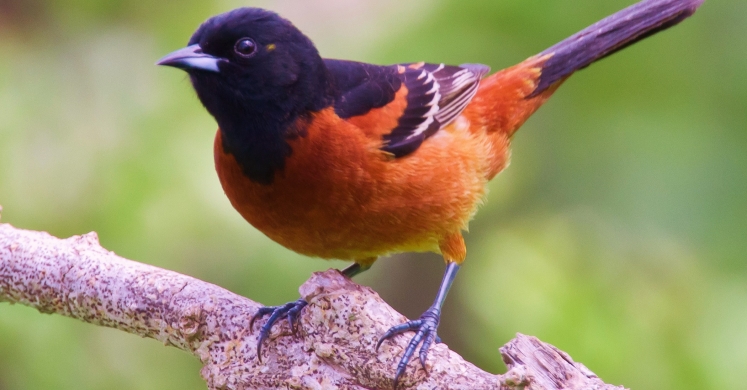Blog

#bioPGH Blog: A Place for the Birds
 A resource of Biophilia: Pittsburgh, #bioPGH is a weekly blog and social media series that aims to encourage both children and adults to reconnect with nature and enjoy what each of our distinctive seasons has to offer.
A resource of Biophilia: Pittsburgh, #bioPGH is a weekly blog and social media series that aims to encourage both children and adults to reconnect with nature and enjoy what each of our distinctive seasons has to offer.
One of the most common ways that scientists communicate their research findings is through academic peer-reviewed journals—publications that review each submitted article with strict criteria for accuracy of information and the appropriateness of study methods that the hopeful would-be authors used for their research. Though reading journal articles can be more difficult than reading a popular periodical since journals are much more technical, the benefit is that you are reading results and conclusions in the context that the author intended. Plus, you can be the first to hear about exciting or important new discoveries! For birding enthusiasts in Pennsylvania, the September issue of the journal Biological Conservation provided just such an opportunity with the paper “Stewardship responsibility of Pennsylvania public and private lands for songbird conservation.” Let’s explore the findings of this new study!
The broad conclusion that this paper shares is that both public and private lands are important for bird habitat across the state. Many have noted that public lands certainly are important in broad terms of conservation. They tend to be under less pressure from human development and can provide high quality habitat since they are typically less disturbed. The concerns discussed in the paper, however, indicate that even though roughly 15% of land in Pennsylvania is publicly owned, it is likely that these parcels of land do not include the full variety of habitat for all species of birds that either reside in Pennsylvania or use the state as a migratory stop-over. Different species of bird usually have distinct preferences for habitat type based on their own needs and specializations, and some birds need forest habitats, but other species need grasslands or shrubby habitat, or coniferous forest rather than deciduous. Over 90% of Pennsylvania public lands are forested, which means that the birds species that need shrubby or forest edge habitat are more likely to depend on private lands. In addition to this, bird species can be more specialized than simply coniferous forest, grassland, or forest interior. For example, even within densely forested habitat, in a hilly and mountainous state like Pennsylvania, the changes in elevation impact the type of birds that live in parts of the forest. An increase in elevation tends to mean a decrease in water availability—which may not be a problem for all bird species, but it definitely is at odds with the needs of others. Thus, because of the limited availability of some habitat types, simply emphasizing conservation management of public land may not be enough for the birds of Pennsylvania.
What does this mean for us here in Pittsburgh, Pennsylvania? Most of us don’t have wide acres of open land, to manage as birding habitat, but we can certainly still be good land stewards ourselves. First, if you have a yard, even if it isn’t terribly large, you can follow the suggestions of the National Wildlife Federation to create a mini wildlife refuge in your backyard. Essentially, the suggestions boil down to selecting native sustainable plants, including a water feature, and providing nesting space for young. If you have already been designing a garden to enhance biodiversity for a while now, you can also look into having your garden certified by the NWF as a wildlife habitat.
However, many of us do not have yard, but that is not a problem—we can still make a positive contribution to private lands as habitat. By visiting and supporting local parks (city, county, and borough parks), you’re helping to ensure that city refuges and migratory stopovers are protected. If you have a few extra hours per week or month, you can even volunteer at a park or with the Urban EcoStewards throughout Pittsburgh.
Most importantly, we can impact bird conservation by being aware of the issues wildlife face. Great resources for learning more about Pennsylvania’s birds are the Pennsylvania Breeding Bird Atlas, the Pennsylvania Audubon. You can also start to explore more in-depth bird research by looking into bird-specific scientific journals such as the Journal of Avian Biology, Wilson Journal of Ornithology, The Auk: Ornithological Advances, or The Condor: Ornithological Applications. The important part is to keep exploring!
Connecting to the Outdoors Tip: Other ways to support bird conservation while learning more about them are to check out birding nature walks offered by our local Audubon Society of Western Pennsylvania. They manage nature reserves just outside the city and offer guided tours with seasoned naturalists and birders. They also have great insights for what we can do local to protect bird habitat!
Continue the Conversation: Share your nature discoveries with our community by posting to Twitter and Instagram with hashtag #bioPGH, and R.S.V.P. to attend our next Biophilia: Pittsburgh meeting.
Photo Credits: Wikimedia User Dan Pancamo CC-BY-SA-2.0 and Nicholas A. Tonelli CC-BY-2.0

